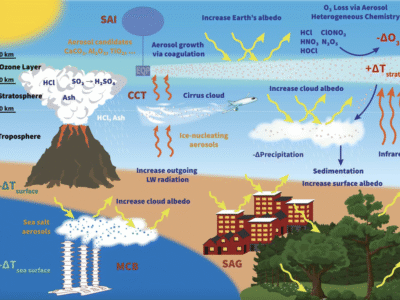
By various estimates, rooftop solar panels could provide a quarter to a half of the world’s energy needs by 2050. But within this wide range, there are many uncertainties, and researchers have struggled to develop a true global picture of what rooftop solar could really do. Now, in a new study, an international team has conducted the first detailed worldwide study on this question. The findings were published in the journal Nature Communications this week.
With continuing reductions in manufacturing costs and improvements in the ability to install equipment, rooftop solar photovoltaics used in homes and commercial and industrial buildings are currently seen as the fastest way to increase sustainable-energy supplies.
Led by researchers at Ireland’s University College Cork, the authors of the new study mapped 130 million square kilometers of global land surface. From this, they identified 0.2 million kilometers of rooftop area. The rooftops were then analyzed using a machine learning algorithm to determine factors that could affect their potential to generate energy, such as local population, rooftop area, and whether the roofs were over commercial or residential spaces.
The researchers found that 27 petawatt-hours—that is, 27 quadrillion watt-hours—could be generated each year. The greatest potential, they say lies in Asia, North America and Europe. Depending on location and other factors, the cost would be between $40 and $280 per megawatt-hour, with the lowest costs being in India and China, and among the highest in the United Kingdom and the United States. This potential exceeds 2018 global energy consumption. (Electricity use in homes was accounted for about 6 petawatt hours.) However, it is not clear how much of this electricity might be usable; future potential would depend on other factors, especially the development and cost of ways to store and distribute the energy.
“The open data generated in this research helps to quantify, locate and prioritize investment in zero-carbon electricity systems,” said study coauthor James Glynn, a senior research scholar at Columbia University’s Center on Global Energy Policy. “By mapping the solar rooftop potential in high resolution globally, development banks and energy agencies in developing countries are better informed as to the technology’s role in enabling sustainable development towards climate action and affordable and clean energy.”
The authors say that their findings will have important implications for sustainable development and efforts to mitigate climate change. Globally in 2018, nearly 800 million people, over 10 percent of the world’s population, were without electricity, with most living in rural areas.
The study’s lead author is Siddharth Joshi of University College Cork. Other authors are based at Imperial College London and India’s Ahmedabad University.




This is certainly a great study. However, I am surprised that the continent of Africa is missing in the geographical locations that have potential. In my opinion Africa has the greatest NEED and solar energy strongly available in most locations almost 12 months a year. Is there a good reason for Africa not considered a potential area?!
Why limit the study to just rooftops? Why not add in parking lots? Parking lots at malls occupy more space than the mall buildings do and could have solar panels installed on posts above the car spaces. This would add to the potential for solar power while also shading the cars and keeping them cool in the summer. It would make the lots more efficient and also reduce, to a small extent, the urban heat island effect.
It is quite discouraging that despite the overwhelming evidence that climate change is now accelerating and that certain destructive consequences are baked in that we do not have the equivalent of a Marshall Plan in the United States and in other wealthy technological societies to maximize transition to solar and other forms of renewable energy. We are certainly more fortunate than most people and in that context we have been able to make both our primary residence and a rental property virtually carbon-free with one house now being a net energy producer. We have two electric cars that we plug into our solar panels on a regular basis. It is a great feeling and although again we are privileged, there are tens of millions of families in the United States in a position to do this transition immediately without creating undue Financial stress. Another hundred million families in the country could easily do this with some Financial stress. We are passively waiting for governments to do something but many of us are in a position to do something now. Now is the time to act.
I have two solar roofs since long ago; on my house in Toronto and on my Rancho in Northern Ontario.